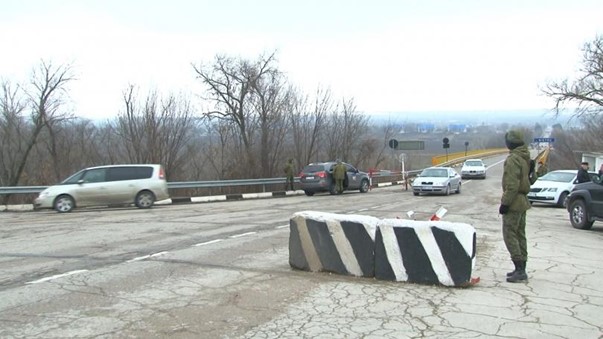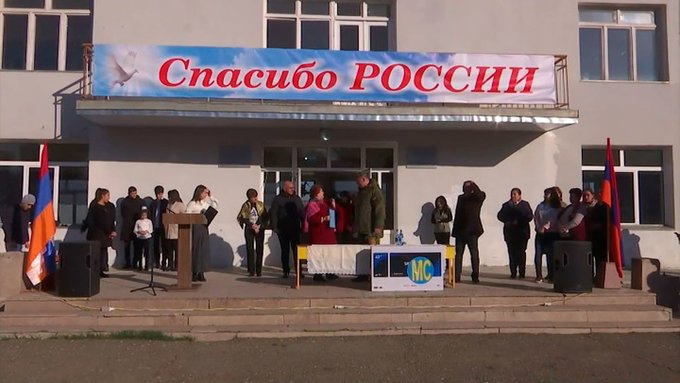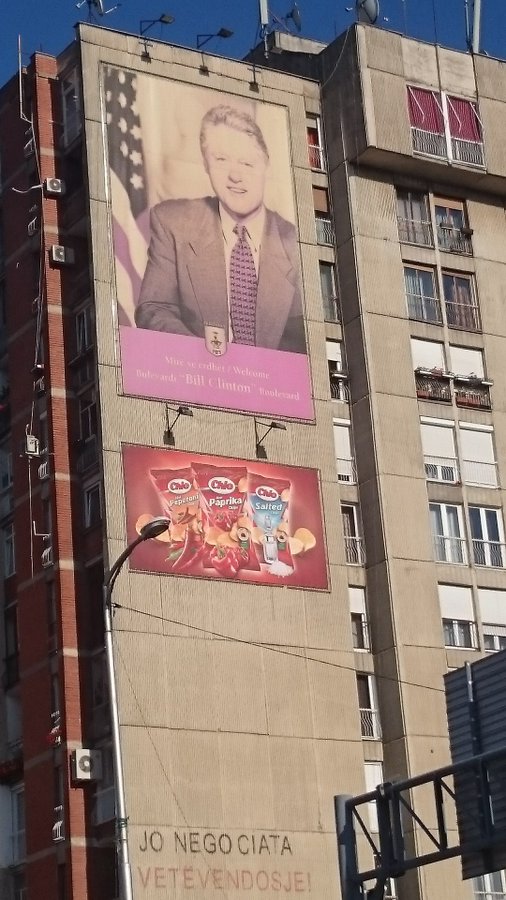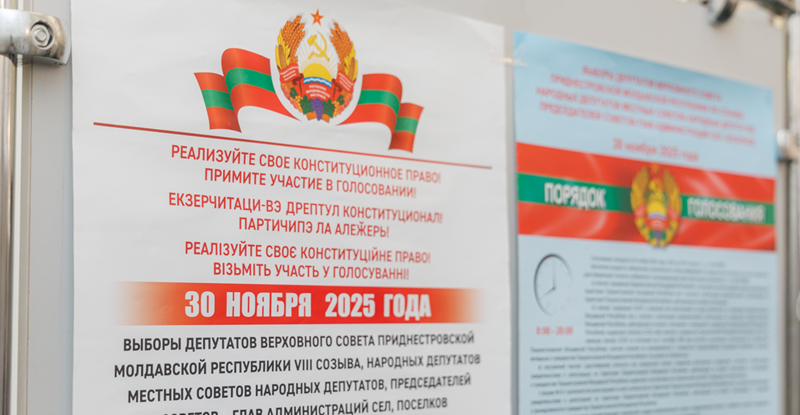The Moldovan Enclaves at the Whims of Transnistrian Secessionists
On the second of September 2021, Transnistria (TMR) celebrated 31 years of independence. This de facto independence from Moldova has seemingly been at a standstill since active fighting subsided in the early 1990’s. Although most experts would agree that ‘frozen conflict’ is an inaccurate term for the Moldovan-Transnistrian conflict, the lethargic efforts put into conflict resolution point to a state of little movement. Surprisingly, it is the government in Chişinău that seems to be frozen in this conflict.
The world was impressed when Maia Sandu boldly stated that Russian troops (the so-called ‘peace-keepers’) ought to leave Moldovan territory after her party won the 2021 parliamentary elections. Nevertheless, it seems making that single statement was enough to check ‘Transnistria’ off the to-do list and Sandu has since been preoccupying herself with other concerns. This stance is matched by the Moldovan population; of course, they see Transnistria as a part of Moldova, but after three decades of separation it seems active participation in reconciliation has continuously dwindled. Yet, there are small, often completely forgotten, regions in Moldova that have the potential to shake up and wake up the negotiations.
Dubăsari District is one very important anomaly worth paying attention to. It is located almost entirely on the left bank of the Dniester and is even named after one of Transnistria’s largest cites, Dubăsari. Nevertheless, this is a divided district, partly controlled by Romanian-speaking Moldovan leaders, and partly being under subordination of Transnistrian de facto authorities. The Chişinău controlled green areas on the map below cut deep into the secessionist violet areas and thus having at least a theoretical potential to seriously disrupt north-south connections and transportation links within Transnistria.
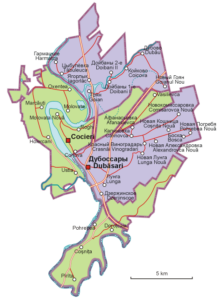
Image: Contested Dubăsari District (Source: Aotearoa)
This district has a unique history. According to primary research from Keith Harrington, a PhD candidate at Maynooth University, during the war in Moldova, the local predominately ethnic Moldovan populations created armed groups. These included the Scorpions in Cocieri and the Burunduk in the Dubăsari suburb of Corjova. These native militias were armed by local police and fought against the separatists. The successful defense of their villages didn’t go unnoticed; party leaders from the time of the resistance retained power for a long time, and many militia members were integrated into the gendarmerie of the Moldovan military, the Trupele de Carabinieri.
After the war, as the Transnistrian de facto state took shape, the messy borders began to cause problems. For example, Cocieri, a left-bank settlement which acts as the seat of the Chişinău controlled district, doesn’t have direct road-access to Moldova proper. It is largely dependent on a ferry which regularly crosses the river, but which services can be delayed depending on water levels. The water levels are, perhaps inconveniently, controlled by the nearby hydroelectric dam under separatist supervision. If locals want to reach the rest of Moldova by other means, they must cross through secessionist territory.
The borders have also led to other problems. In the mid-1990s, Transnistrian forces began harassing Moldovan farmers who needed to cross Transnistrian controlled roads to reach their fields. The question of farmland access in these Moldovan offshoots was central in negotiations between the two sides. Access was routinely denied, then sporadically granted depending on the state of relations. In 2006 an agreement, overseen by the OSCE, was signed; it granted Moldovan farmers access to their land so long as they register themselves with local Transnistrian authorities. All registrations were due to expire in 2009, but it took another five years before farmers could apply for new registrations to legally access their land, and it took another four years before these registrations were finally approved. This occurred in 2018 after Chişinău and Tiraspol signed a new agreement. Despite the Moldovan government standing up strongly for these farmers in the past, it seemed as though Chişinău had since largely lost interest in the areas. The OSCE barely noted the problem, and farmers were only offered a small compensation for the lost time.
Access to farmland wasn’t the only emotionally charged issue in Dubăsari District throughout the years of regular negotiations. In 2004, Transnistrian police moved a border checkpoint near the southern of the two exclaves. The 200m move, known as the Doroţcaia crisis, was criticized by the Moldovan authorities but largely ignored by Russian ‘peacekeepers’ meant to stabilize the conflict. The crisis almost led to a new breakout of active conflict. The Moldovan negotiators set the issue on the top of the to-do list, but a solution was never reached. Despite the tension, Russian troops didn’t change their stance, and Moldova was quick to drop the issue and forgot it ever even existed.
Although the recent parliamentary elections in Moldova show that the Dubăsari District was largely supportive of Maia Sandu’s pro-European party, there has been opposition against Chişinău’s endeavors in the past. After Moldova signed the Association Agreement with the EU, there was significant tension in the settlement of Doroţcaia over the idea of ditching Moldova to join the separatist de facto state. Many residents in the area fear the real threat of worsening relations with Russia and Transnistria should Moldova continue its pro-Western path; as previously mentioned, access to their land is largely dependent on the state of relations between Chişinău and Tiraspol. Many rely on growing food to eat and sell, and if Transnistrian authorities are the ones to provide that access it’s easy to understand why some villagers would prefer living under Tiraspol’s jurisdiction. The higher pensions in Transnistria add to the attractiveness of the idea. Despite past strong pro-Moldovan sentiment and active opposition to the separatists in the region, in an interview, even the mayor of Doroţcaia didn’t deny he would join Transnistria, but only noted his concerns over the border should they join the secessionists.
Despite the memory loss in Chişinău, it is precisely the locals in the Dubăsari District that can’t forget about their geographic location. They are regularly reminded of their status as Moldovans whose lives exist at the whims of the de facto authorities in Tiraspol. Many in the region interact with Transnistrian police daily as they cross the border to access their land or to reach Dubăsari for work. Due to the pandemic and Transnistrian border closures, Moldovan farmers were again denied access to their land, and numerous Transnistrian border posts began to pop up, some seeming to encompass entire Moldovan villages. The TMR government cited concerns over health as the primary justification. After outcries from local Moldovan authorities, the central government in Chişinău, again, only offered small compensation for their economic loses.
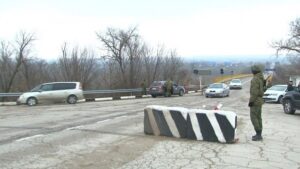
Image: Transnistrian border post pop-ups (Source: http://novostipmr.com)
Another anomaly worth paying attention to is Varniţa. The town is a suburb of Bender (Tighina), one of the right-bank settlements under Transnistrian control. Varniţa had previously been fought over, but, similar to the story from the Dubăsari District, it was local Moldovans who resisted and were able to keep their village under Moldovan control. Nevertheless, already in 2007 after disputes between businessmen, the Transnistrian police occupied two businesses in Varniţa and held them under their control. Years later, ahead of the Association Agreement summit in Vilnius, then Transnistrian president Shevchuk published a decree on the TMR’s borders which claimed that Varniţa and the villages under Moldovan control in the Dubăsari District (on the left bank) rightfully belonged to Transnistria and the separatist state would work hard over the coming months to achieve control over their entire territory. The Moldovan government criticized this harshly, but, at the end of the day, it was the locals themselves that prevented Transnistrian authorities from planting new border posts around their village and not the empty words from Chişinău.
Throughout the last decades in both the Dubăsari and Tighina Districts, the Moldovan government has proven to be mostly passive and sometimes outright careless in protecting the rights and needs of those Moldovan citizens. Considering the history of the active pro-Moldovan resistance in these places, the Moldovan government is doing them a disservice. Furthermore, it would be in Chişinău’s interest to actively integrate them into negotiations with Tiraspol and Moscow. After almost 30 years of separation, the citizens of Cocieri, Coşniţa, Varniţa, and Doroţcaia are some of the few actors left that are negatively affected by the continued existence of Transnistria. They have collective experiences in dealing with Transnistrian authorities that anyone from Bălţi, Orhei, or Chişinău can hardly imagine, let alone relate to. Moreover, in the long-lasting stalemate that is the Moldovan-Transnistrian conflict, locals in these districts still have very real stakes in negotiations: their land, their businesses, their language, and their access to Chişinău. Forgetting these settlements and disregarding them as unimportant villages due to size or economic importance is shortsighted. This territory, its locals, and their governing officials could be the key to revitalizing inter-Moldovan talks and to providing fresh material for negotiations. If ignorance prevails, then why shouldn’t Chişinău start thinking about land swaps and border corrections? Losing ‘forgotten’ left bank villages and gaining ‘refound’ right bank Tiraspol controlled settlements in return could at least fix the messy geography.
Author: Lance Bradley


